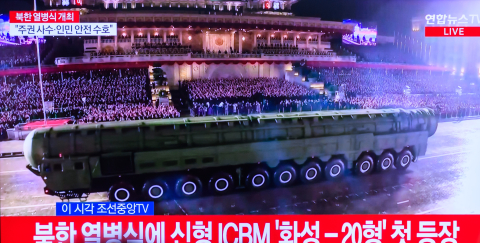Russian Gas: Reminder of Yesterday Presaging Tomorrow?

One can’t help but be struck by the irony earlier this week of Russian President (ad-interim) Medvedev celebrating the landing of gas in Lubmin Germany from the Nordstream gas pipeline from Russia while Former President and President-in-waiting Putin welcomes Chinese Premier Wen Jiabao to seek a deal to send Russian gas east to Chinese markets.
President Medvedev is opening the first of two pipes laid under the Baltic Sea that will supply up to 55 BCM of gas to Europe from Western Siberia. Former President Putin is trying to finalize a deal he penciled with China in 2006 when frustrated by Europe’s expressions of concern about the security of Russian gas supply. Putin wanted to be able to tell his G8 partners in St Petersburg that he had alternatives to European markets for his gas. Putin was and remains a gas geostrategist. For China, his gas is probably still too expensive.
Something else hasn’t changed either. Russia has still made entirely too little effort to prove up and develop incremental gas supplies. Both western and Russian companies remain uncertain of investment conditions for major energy infrastructure projects in Russia. Supplies from Yamal and Schtokman continue to recede into the future. It is no wonder Russian analysts think Putin’s efforts with China are good news for independent gas producer Novatek, because they are the only gas company increasing its production from Tarkosaleneftegaz and its 51% share of Sibneftegaz. Russia’s competitive position in gas markets has already eroded and risks eroding further if investment policies don’t change.
Some of the consequences of Nordstream still need to play out. As European demand for gas is not increasing dramatically, Russian supplies are likely to remain roughly the same for the next years. Some increase in gas is required to compensate for lower nuclear and to backstop increasing intermittent renewables. Some loss of productive capacity in Europe may be expected, but it depends on whether new North Sea plays compensate for lower production elsewhere. But new sources of often lower priced LNG are coming on stream - even conceivably LNG from US shale gas.
That means the gas fill for Nordstream must come out of other gas exports to Europe through existing infrastructure. So far we have heard Gazprom’s Alexei Miller say up to 20 BCM could come out of Ukrainian transit to fill Nordstream. That reduces Ukrainian transit to 80 BCM and reduces their transit fees by $550 million per year. Presumably when the second line of Nordstream comes on next year, at least another 20 BCM will come out of Ukrainian transit. Thus, some celebrate the fact that European vulnerability to gas through Ukraine is reduced. But Southern European gas consumers - who are among Europe’s most vulnerable - are still fully exposed to any new gas theatrics between Russia and Ukraine. Some of the first gas through Nordstream flows into the OPAL system to the Czech Republic - but that doesn’t get to Southern Europe.
Ultimately, European gas customers are going to repay the 7.4 billion Euros spent building Nordstream -essentially redundant gas transport capacity. Of course more pipelines generally mean better security, but at what price? Gazprom owns 51% of Nordstream while the rest is shared out among 4 European gas companies who will test whether minority voices are audible at Nordstream Board meetings.
Should former President Putin enjoy any success finding an acceptable price formula with his Chinese interlocutor, Europeans should take an interest in where Russia will find the gas for the Chinese market? The original 63 BCM for China were to come from Western Siberia. That is a bit more than the 55 BCM combined flow possible by the end of next year through Nordstream - also from Western Siberia.
In 2012, barring the unforeseen, Russia’s master gas strategist will return to the Presidency. There is little yet to suggest any change in his use of gas as a geostrategic tool. The Commission has recently put forward some strategic thinking on how to achieve a greater common voice in energy. In fact, the original driver for a common external position in energy matters in the Lisbon Treaty was the security of Russian gas and is referred to as the “Gazprom Clause”. The next months should provide an important opportunity for the EU to take voice lessons and learn to sing with one voice.

Available in:
Regions and themes
Share
Related centers and programs
Discover our other research centers and programsFind out more
Discover all our analysesBrazil One Year Away from the October 2026 General Elections
Brazil’s general elections will be held on October 4, 2026, to elect the president, vice-president, members of the National Congress, governors, deputy governors and state legislative assemblies. For the presidential and gubernatorial elections, a second round will be held on October 25 if no candidate obtains a majority of the votes in the first round.
COP30: An Inflection Point for Climate Action and Governance
The 30th Conference of the Parties (COP30), opening in Belém, Brazil, on November 10th 2025, convenes at a perilous moment.
The Strategic Dimension of Skills in the Clean Industrial Deal
In the competitiveness and energy transition battles, the European Union (EU) must master a determinant factor: skills.
The Energy Transition Faces Geopolitical Challenges. How Can Ideological Divides Be Overcome?
President Trump’s positions and policies, combined with record coal consumption and booming global electricity demand, geo-economic confrontation, and widespread concerns about energy security, are changing the game when it comes to understanding realistic decarbonization trajectories. The war in Europe is intensifying competition between defense and transition budgets. This is also the case elsewhere in the world.












